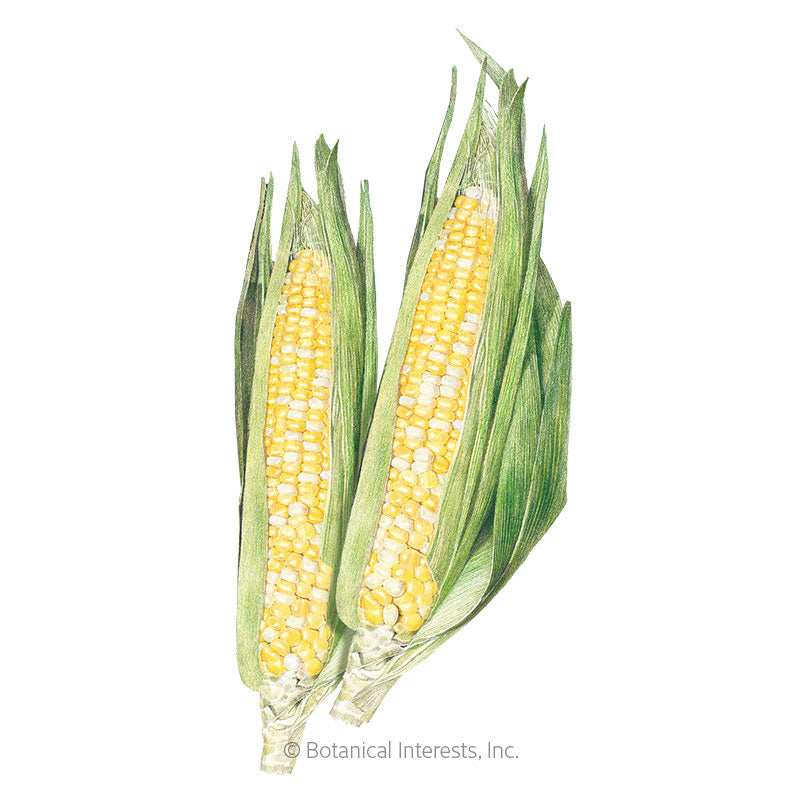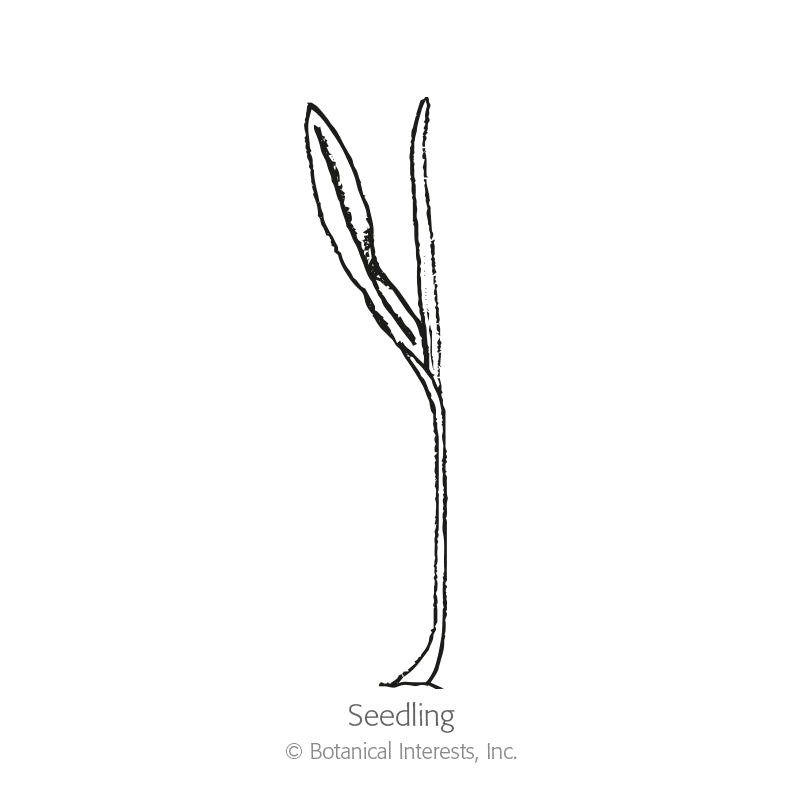


- Variety Info
- Sowing Info
- Growing Info
Variety Info
Days to Maturity: 75 days
Family: Poaceae (formerly Gramineae). Grass family, includes corn, wheat, oats, rice, lawn grasses, and ornamental grasses.
Type: Sugary enhanced type (SE) (Learn More)
Native: Americas
Hardiness: Frost-sensitive annual
Exposure: Full sun
Plant Dimensions: 6 ½' tall
Variety Info: 8" ears. Bicolor kernels are white and yellow. 'Ambrosia' is a homozygous sugary enhanced (se) type corn that is resistant to Stewart's Wilt and Northern Corn Leaf Blight.
Attributes: Stewart's Wilt Resistant, Northern Corn Leaf Blight Resistant, Frost Sensitive

Sowing Info
When to Sow Outside: RECOMMENDED. 1 to 2 weeks after your average last frost date, and when soil temperature is at least 60°F, ideally 65°‒90°F.
When to Start Inside: Not recommended; roots sensitive to transplanting. Best results occur when seedlings are transplanted less than 2 weeks old.
Days to Emerge: 5 – 10 days
Seed Depth: 1" – 1 ½"
Seed Spacing: A group of 2 seeds every 12"
Row Spacing: 24" – 36"
Thinning: When 4" tall, thin to 1 every 12"
Your hardiness zone is
Growing Info
Harvesting: Sweet corn is ready about 3 weeks after the silks appear. Harvest when the silks are brown, but not dried, and the husks are dark green; ears should be plump, and rounded rather than pointed at the tip. To test for ripeness, gently pull back the husk and pop a kernel; the liquid should be whitish; if it is still clear, ears are not quite ready.
Special Care: Keep area weeded, especially when plants are young and have shallow roots. To guarantee good pollination, gently shake the tassels to release the pollen onto the silks. You can also hand pollinate by pulling off a tassel from one plant and wiping it on the silks of several ears. If you notice "skips" or blank spaces on an ear where a kernel should be, that is an indication of inadequate pollination.




